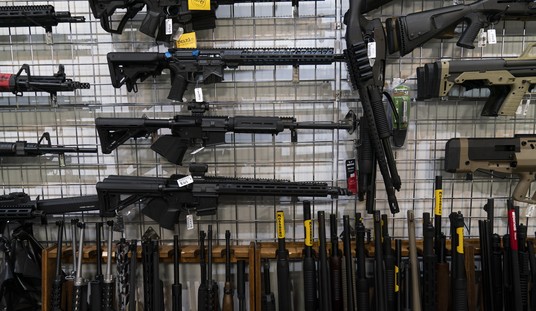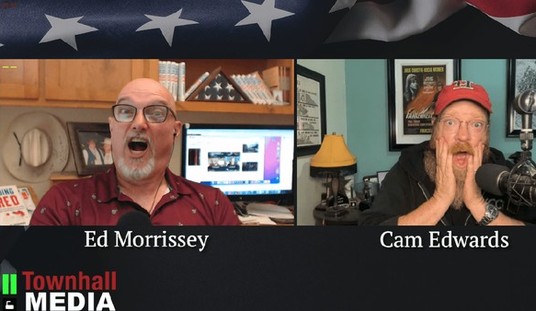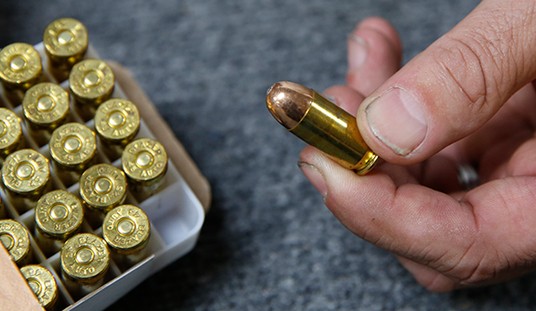A lot has changed in terms of our Second Amendment rights over the past 30 years, and mostly for the better. Starting in the late 190s dozens of states adopted “shall issue” carry laws, and more than half the country is now permitless carry, while the Supreme Court has ruled that our right to both keep and bear arms in self-defense isn’t a “second class right” (though some courts have been awfully slow or reticent to acknowledge that reality). But as I was recently reminded while thumbing through a buddy’s old Playboy magazine from July of 1993 (looking for interesting articles, I swear!) there’s a lot in the gun control debate that hasn’t changed much at all.
That particular issue featured a “point/counterpoint at point blank range” from two contributing writers to the magazine. Taking the pro-2A position was William J. “Bill” Helmer, a contributing editor to Playboy for three decades and a writer who published several books on crime during his career. Gun control advocates, were represented by Reg Potterton, a British-born features writer for the magazine. Both men have since passed away, but their arguments live on today on both sides of the issue.
Take Potterson’s opening salvo, for instance:
There are so many statistics about guns and the troubles they cause that most people are sick of hearing them. We know that the firearm-homicide rate in the United States is much greater than that of other industrialized nations. And we know that life in our streets, schools, and suburbs is more violent this year than last year. We don’t need to be reminded – city dwellers have known it for 30 years – that fear makes a mockery of the freedom we’re supposed to enjoy in the frightened land of the free and the barricaded home of the brave.
Potterton wasn’t exactly right with his stats, which is something else that hasn’t changed with anti-gunners over the past 30 years. While 1993 was one of the worst years in U.S. history for both violent crime and homicides, the murder rate peaked at 10.2 per 100,000 in 1981 (it was 9.5 per 100,000 in 1993) and violent crime peaked in 1992 at 757 per 100K. But both murder rates and violent crime had largely plateaued over the course of the previous 10 years, and according to Potterton, only one thing was going to save us:
Making people wait a week or six months for a weapons permit won’t solve the problem. Nor will prohibitions against private ownership of assault rifles, grenade launchers, sawed-off shotguns, dumdum bullets or machine pistols. Limiting ownership to citizens who are sane or free of a criminal past won’t do it, nor will compulsory registration. The guns have to go, once and for all. We need to live without fear of guns and of what guns do.
All handguns should be banned, not only from private hands but from everyday police possession as well. Exceptions to the gun ban would be rifles and shotguns used by hunters, skeet shooters, and members of target-shooting clubs, and antiques owned by dealers and collectors. But all weapons would be registered and all owners licensed, with permits renewed on an annual basis, subject to an applicant’s fitness to hold a permit. There should be an amnesty period during which stolen or unregistered guns could be handed in without recrimination. The government would buy the remaining guns and destroy them.
Yes, such a program would be expensive and complicated to administer. It would require yet another snarl of bureaucracy. But it could be done, and it would work as smoothly as any other form of registration works once the machinery was in place.
Waiting periods, bans on “assault weapons”, gun registration, background checks; all of them a standard part of the talking points from anti-gun politicians and gun control groups. And just like today’s most ardent anti-gun advocates, Potterton was convinced that those were only half-measures; the only real way to reduce crime was for responsible gun owners to give up their guns and to turn the right to keep and bear arms into a cultural and legal wrong punishable by prison time. We’ve literally been hearing this for decades, and all the while the number of firearms in private hands has only increased. When Potterton demanded his gun ban it was estimated there were about 187-million guns in the hands of civilians, compared to more than 400-million today.
Violent crime, on the other hand, is far lower than when Potterman issued his call to disarm. Beginning in 1993 and almost every year until 2020 the U.S. homicide and violent crime rates declined, eventually falling more than 50% from their highs in the early 1990s, and all while more guns were purchased and carried by responsible citizens.
Writing in defense of the Second Amendment, William J. Helmer noted the cyclical nature of violent crime, pointing out that “the homicide rate today is about the same as it was in the early Thirties, when there were few gun laws, and about the same as it was in the late Seventies, after thousands of gun laws had been passed.”
Progun people know that all those laws against gun sales or gun ownership billed as “a step in the right direction” won’t work. They also know that guns are found in more than half of the country’s households and that almost all gun violence is caused by a tine percentage of gun owners already outside the gun control loop. Declaring martial law and conducting house-to-house searches would still leave the streets unsafe. The uselessness of more gun laws appears so obvious that the incessant demands for more laws seem simply a desire to prohibit guns. Or punish gun owners. Or both.
That’s become even more apparent in the wake of the Supreme Court’s decision in Bruen, with blue-state lawmakers admitting that the goal is to have as few people exercising their Second Amendment rights as possible. It just so happens that it’s easier to disarm the law-abiding than it is law breakers, which Helmer also deftly pointed out in his closing argument.
Finally, let’s compare guns and alcohol. We know that Prohibition reduced social drinking without touching the problem of drunkenness. In fact, it transformed drunkenness from a working-class ill into a symbol of middle-class rebellion. What makes anti-gun activists think it would work for firearms? Gun prohibition, even if could disarm all law-abiding gun owners, would not take the pistol from some punk’s jacket pocket.
That’s even more true in 2023 than it was in 1993, with technology advancing to the point that it’s possible to make a functional firearm with a 3D printer and a few supplies purchased at your neighborhood hardware store.
There were some other “the more things change, the more they stay the same” moments for me as I read through the point-counterpoint; Potterton’s demonization of the NRA quoted then-Rep. Chuck Schumer slamming the organization for opposing a ban on “military-style weapons”, while Helmer argued that “nearly all the killing occurs in a few high-crime neighborhoods in our largest cities” and that Americans’ fears of being a victim were amplified and exploited by a 24-hour news cycle and cable television’s focus on crimes of violence.
The arguments haven’t changed much at all over the past 30 years, though the country has definitely seen some changes. Crime rates fell to 50-year lows only to surge again amidst the COVID court closures, depopulations of jails and prisons, and civil unrest in 2020. There’s been no appreciable decline in the percentage of the population who self-reports as gun owners, but the number of privately-owned firearms has soared by more than 100% since Helmer and Potterton squared off in the pages of Playboy. In 1993 the right-to-carry revolution was well underway, but there were still far more states that had either “may issue” laws in place (19) or no way to carry at all (14) than the sixteen “shall issue” states and Vermont’s lonely status as the sole permitless carry state in the nation.
There are now tens of millions of Americans lawfully bearing arms on a daily basis; something that Potterton believed would have led to an explosion of violent crime. Instead, even after taking into account the crime spike that began in 2020 (and may be already abating in many U.S. cities) our violent crime and homicide rates remain far lower than they were in the early 1990s. More guns, more individuals exercising their right to armed self-defense, and less crime per capita than what we saw thirty years ago.
Looking back it’s clear that Helmer won his debate with Potterton, but Potterton’s anti-gun ethos lives on in the gun control lobby today. From Gabby Giffords’ call for no more guns to the demands by Here 4 The Kids for governors to ban gun ownership via executive orders, a prohibition on gun ownership remains the Unholy Grail for the gun control movement. And though we’re fighting from a more advantageous position than we were 30 years ago, gun owners are still struggling to strengthen and secure access to our most fundamental of civil rights; the right to protect ourselves and the people we love from those who would do us harm.










